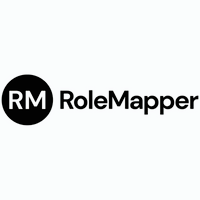Why most job architecture projects fail and how to fix them
A strong job architecture is the foundation of reward governance which defines how work is organised, valued and paid and provides a consistent framework for levelling, grading and pay progression. When it’s done well, it creates clarity, transparency and fairness across every aspect of reward.
Yet in practice, most job architecture projects never deliver what they promise. After months of spreadsheets and consultant workshops, the new framework launches… only to start unravelling within a year. Roles drift, titles multiply and pay alignment slips out of view.
The causes are consistent - and avoidable.
1. The DIY or consulting trap
Many organisations either try to build job architecture themselves or outsource it entirely to consultants. Both routes come with serious pitfalls.
The DIY approach looks economical at first but quickly becomes resource-intensive. Updating a single job profile can take half a day across HR and business teams. For 1,000 roles, that’s around 4,000 hours - or 500 working days.
Consulting projects bring expertise but often at high cost. They typically produce static frameworks that look impressive on paper but are difficult to maintain and adapt. Once the consultants leave, the framework freezes - and the connection between jobs, grades and pay bands starts to weaken.
When pay frameworks drift away from the reality of work, reward integrity erodes. Pay becomes harder to justify, and inconsistencies start to creep in, exposing the organisation to equity and compliance risks.
The fix: combine expertise with automation. Use job architecture technology that standardises and accelerates the work while giving HR and reward functions control to manage levelling, job evaluation and pay alignment dynamically.
2. Inconsistent design and disconnected data
In many organisations, job titles, levels and families have been created inconsistently. Business units develop their own structures, resulting in duplication, confusion and inequity.
Most job data still lives in spreadsheets or documents stored across multiple systems. That creates conflicting versions of the truth and makes it almost impossible to build a coherent framework linking jobs, grades and pay.
Without a single, consistent view, reward governance becomes reactive. Pay benchmarking turns into guesswork, pay progression loses consistency and equal pay or pay transparency analysis becomes an uphill struggle.
The fix: centralise and govern your job data. Create one source of truth where roles, levels and pay structures are fully connected and version-controlled. Use technology to manage changes, align job and pay frameworks, and ensure consistency across the organisation.
3. Too slow to keep up
Traditional job architecture projects move painfully slowly. Building one job family can take five full days of elapsed effort. For large organisations, the timeline can stretch to 12–24 months - and by the time it’s complete, much of the data is already outdated.
Roles evolve constantly as business priorities shift. Without a dynamic way to maintain and update job data, pay structures quickly fall out of sync.
When your job framework can’t keep pace with organisational change, pay governance falters. Managers make one-off pay decisions, grading inconsistencies grow and internal equity becomes harder to manage.
The fix: make job architecture a living system. Use technology that allows you to update and recalibrate roles, levels and pay structures in real time, so your reward data always reflects the current organisation.
4. Weak connection to skills
Many job architectures stop at roles and grades but fail to connect the structure to the skills that underpin them. This creates a critical gap between how work is defined and how value is rewarded.
Without a clear view of the skills required and how they progress across levels, it’s difficult to justify pay differences or build progression frameworks that employees can trust.
In a world moving rapidly towards skills-based pay and capability-led careers, this disconnect undermines both fairness and competitiveness.
The fix: connect jobs, levels and pay to skills and proficiency. A well-structured job architecture provides the bridge between job evaluation, skills frameworks and pay progression - giving visibility to manage fairness, capability and cost effectively.
5. Poor governance and lack of ownership
Even the best-designed job architecture fails without clear governance. Once a project ends, ownership often fades. Teams make independent updates, new titles appear and the framework starts to fragment.
When governance slips, pay frameworks lose alignment. Grades drift, ranges become inconsistent and the organisation’s ability to evidence fairness disappears. This isn’t just an operational risk - it’s a compliance one, particularly as pay transparency legislation raises expectations for objective, gender-neutral pay structures.
The fix: build governance into the process. Establish clear ownership, approval workflows and audit trails across HR and reward. Use technology to track and control changes automatically, ensuring that every job, grade and pay range remains aligned and defensible.
6. Static systems and low adoption
A job architecture has no impact if people don’t use it. Too often, frameworks live in PowerPoint decks or shared drives that few can access. Managers revert to outdated data, HR teams work around gaps, and employees remain unclear about progression and pay.
Without adoption, the architecture becomes a compliance exercise rather than a living tool for fair and consistent decision-making.
The fix: operationalise your architecture. Embed it across core HR and Reward processes - from pay benchmarking and progression to workforce planning and reporting. Use digital platforms that make structures, levels and pay criteria visible and actionable for everyone who needs them.
Why job architecture matters
A robust job architecture provides clarity, control and agility. It’s the infrastructure that underpins fair pay, defensible grading and transparent career frameworks - and it’s becoming essential for compliance with pay transparency legislation.
A strong architecture protects the integrity of pay decisions, supports equal pay analysis and builds the foundation for trust in how people are rewarded.
Supplied by REBA Associate Member, RoleMapper
RoleMapper is an AI-powered job data transformation and management platform.








